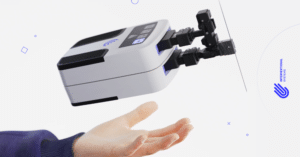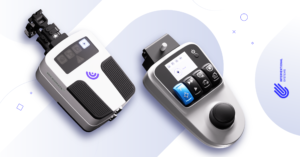Our Value-Based robotics series analyzes the most common barriers to medical robotics adoption. After discussing the clinical benefits, size, and usability of medical robots, we are now addressing what could be the main blocker to widespread adoption: costs.
The usual high initial and running costs of medical robotics
High upfront capital investment, burdensome service contracts, and low utilization rates. The costs typically associated with medical robots are many and add up to a prohibitively expensive deal, especially for non-university hospitals and outpatient settings.
Acquiring a medical robot could mean paying more than 1M€ in capital costs and a mandatory yearly service agreement ranging from 8-10% of that capital cost — high initial costs and high running costs throughout the equipment’s lifetime.
And there are more things to consider.
Large footprint systems have limited portability and occupy valuable room space. They usually need extensive setup and turnover times, and some even require technical support for every procedure. These features not only create costly inefficiencies but can also explain the low utilization rates of medical robots.
Our cost-effectiveness philosophy
The solution to tackle the factors bringing costs up seems straightforward: make the robotic system as efficient, small, flexible, and easy to use as possible. That is, make it the most cost-effective solution.
Cost-effectiveness does not mean cutting corners, let alone at the expense of clinical outcomes. Quite the contrary: a solution is only cost-effective when it provides value above all. And clinical value is at the core of what we do, with proven results in several applications.
So, here’s how we deal with cost-related barriers to medical robotics adoption:
Low upfront capital investment
The price of our full-fledged robotic system, including the planning and navigation station, is strikingly lower than other robots on the market. This alone makes for a faster Return on Investment (ROI).
Low procedure costs
Micromate™ uses sterile disposable accessories, which translates into a lower cost per procedure.
Hospitals can save hundreds in replacement and sterilization costs, not to mention the potential savings related to infection prevention control.
Low footprint
This is a case where the name says it all: Micromate™ really is a very small robotic system.
The complete setup, including the planning and navigation station, fits in a mobile cart that can be wheeled between rooms, easily stored in small spaces, and shipped without hassle. It also doesn’t require a dedicated room, which makes logistics even less costly.
High versatility
Micromate™ is a robotic platform for head-to-toe interventions, compatible with any instrument and most imaging modalities.
Multiple departments can leverage this versatility and start doing their own robotic-assisted procedures so the hospital achieves ROI faster.
High usability
Instead of requiring the clinical teams to adjust their practice to the new medical robot, we built Micromate™ to seamlessly integrate into the clinical workflow.
It makes the robot easier to use, requires less training time, reduces the learning curve effect to a minimum, and eliminates the need for a clinical support specialist in the room. And more importantly, it promotes higher utilization rates.
High flexibility
Mandatory servicing agreements don’t guarantee the highest level of service. A flexible and readily available technical team does.
After purchasing the robotic system, hospitals can request additional services and maintenance as they see fit, paying only what is strictly necessary. The same is true for the Micromate™ Subscription.
The world’s first robotics-as-a-service in the IR industry
After working on designing the most cost-effective robot for micro-invasive needle interventions, we decided to take a step further and make it truly accessible to everyone.
The result is the Micromate™ Subscription.
We brought the concept of Robotics-as-a-Service (RaaS) to the Interventional Radiology field and made our robot available for an affordable, fixed monthly fee for as long as healthcare providers need it.
All subscription packages include a number of disposable accessories and specialized services that IR teams can choose according to their procedural volume.
From keeping the costs within a budget that physicians can manage – bypassing the long, complex capital procurement process – to allowing the teams to explore the robot’s value without a long-term commitment, this subscription-based service creates the perfect opportunity to unlock medical robotics adoption.


